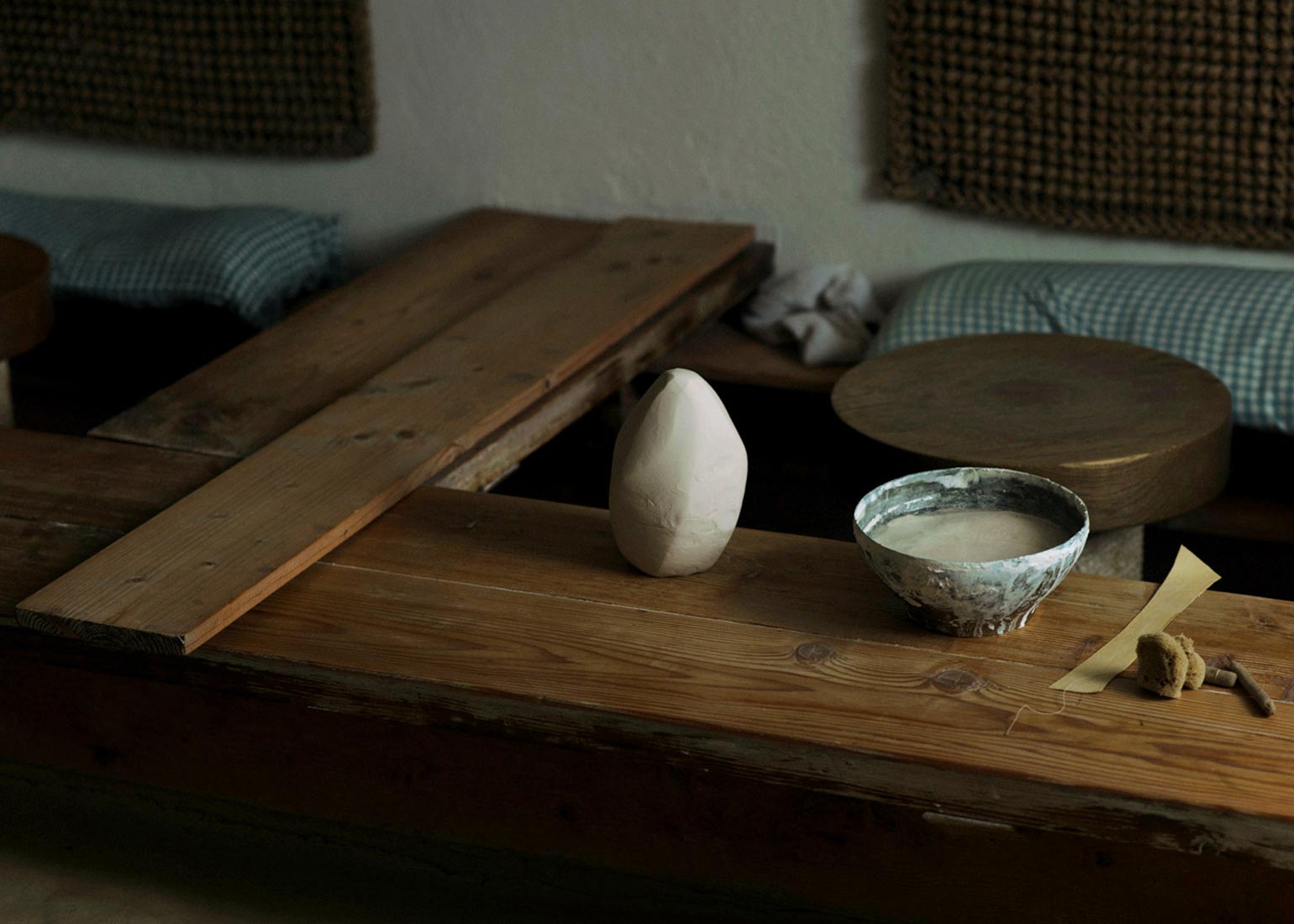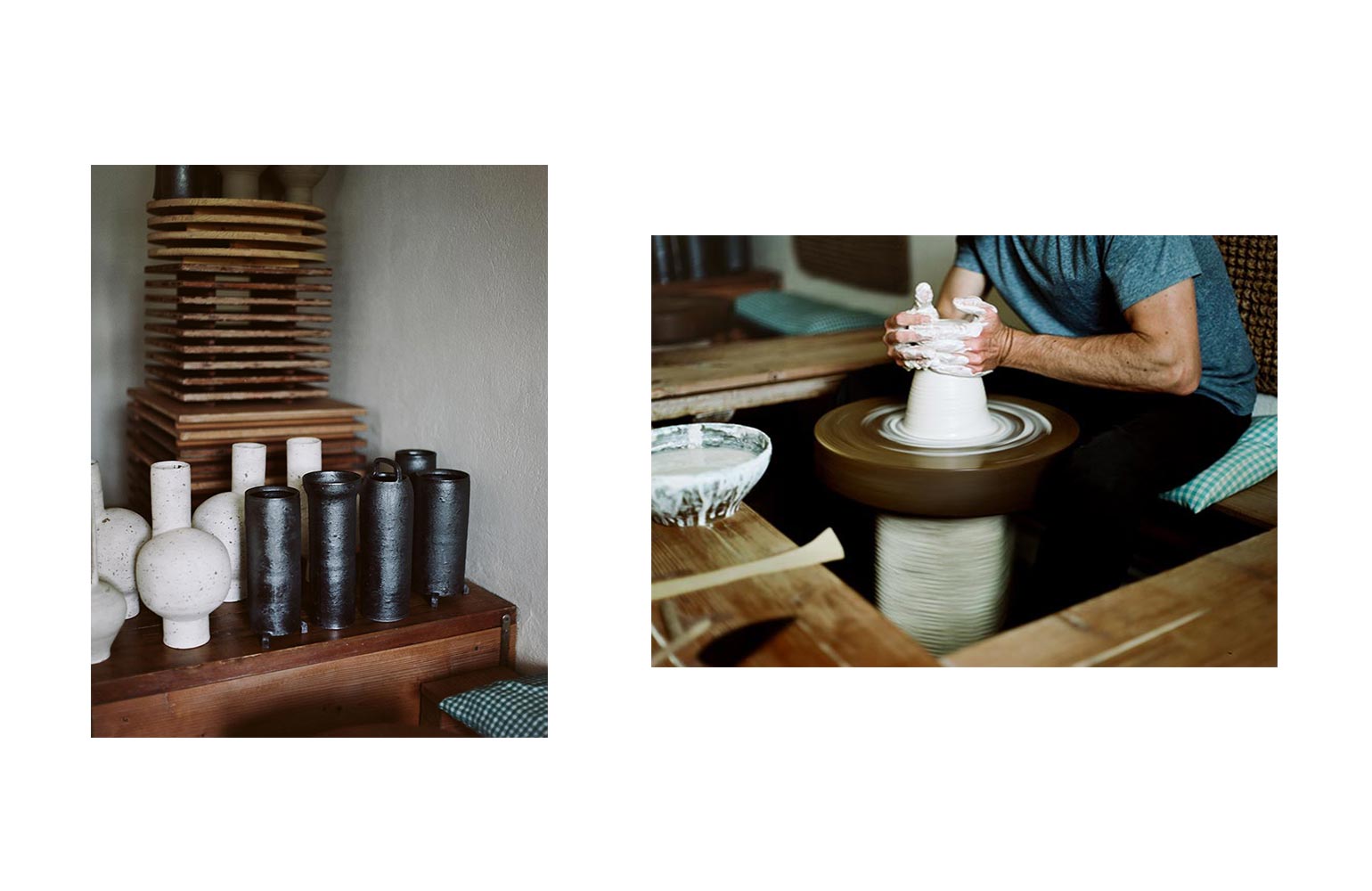
Matthias Kaiser
Maker Profiles
Matthias Kaiser has been part of The Garden Edit from the very beginning. When we conceived this website we wanted to work with innovative and passionate makers from around the world – Matthias fits that bill. We found his work interesting, beautiful and challenging. Zsuzsanna Toth met him over Skype to discuss his artistic approach to commodity, clay sourcing and the trending topics that affect his work.

You have lived and travelled literally worldwide - from the US to Japan and India. How have these places changed you?
A place you have been to doesn’t leave you. It becomes part of your being, especially if you have spent more than a few weeks in it. What transpires changes the way you think and the way you express yourself, some even believe it leaves a mark on your DNA. More than once, the onslaught of fresh experiences has forced me to question my viewpoints and shattered my confidence. I was certainly in danger of getting lost, but ultimately I gained a degree of trust that is based on affirmation.
How have your travels influenced your working process? For example, in Japan, the topic of ceramics is way deeper rooted and complex than in Europe.
The potters I apprenticed with in Japan introduced me to a different way of looking at ceramics. That was the first step and I was not quick to learn. I clung to the western concept of perfection and a simplistic idea of functionality. Over time and with the help of patient friends, the Japanese version of the French phrase “jolie laide” applied to objects and actions, became part of my repertoire. The triumph of character over shapeliness is very much happening in the world of ceramics now, so the coalescence of approaches that comes naturally to me is at last finding acceptance.

You’ve also recently completed a really exciting project in India. What did you get up to and similarly what impact did it have on your work?
The whole thing started with another interview. I was asked what kind of project I would like to do if money were no factor. Interviews are good in that you really have to think about what it is that you are doing and why you are doing it. So I answered that I would love to set up a roadside stall somewhere in India, sell a special selection of pots to passers-by and follow it up with a photographic documentary about the customers and their dwellings. The interview was in November and the project, which I titled The Loyal Exports launched in Ahmedabad the following February and was featured in the New York Times. Some of the ceramics I made have a connection to people and places I encountered on past trips to India and some are prototypes that may eventually develop into new styles. The main focus was to observe and document how the properties of artefacts change as they are moved from one culture to another.
View Matthias Kaiser's Inspired By article about his trip to India

Think about splitting down your products into its elements – what would you say are the components? What do I buy as a customer?
My artistic vision takes the shape of a vessel. I am not selling the function of a vase. It is an attitude, a concept of living. It can be challenging, irreverent, reflective and comforting at the same time. The practical aspect is an essential part of it, like in the duality of body and mind, but the idea is communicated in a nuanced language of intimacy and interference. Every piece is different. The look and feel changes but it always starts with the idea.

How much can you actually plan when making a product and how much just happens coincidentally when working on the potter’s wheel? I started with ceramic making and for me it’s always a challenge to decide which point to stop - knowing it wouldn’t get any better.
As long as technical challenges are the main obstacle, you are not really creating. I have found that when technique is internalised, one can engage not only the process but also matter far better. This might be stating the obvious, but I like for both to have a voice in the finished piece. It is not just my effort or idea that dictates the outcome, but the succession of steps that are necessary to reach the goal, how I choose to execute them and the inherent nature of the manipulated substance. I am sceptical of work that aims for measurable perfection, e.g. symmetry or uniformity. The impression I get more often than not; is that of a struggle. When evidence of someone’s intervention and the properties of the raw materials are visible, I usually perceive that as more harmonious. This also includes an acceptance of the traces of use and aging as an additional quality.


You dig your own clay. Can you explain why and the process that comes with it?
I love to work with raw materials that have a story to tell. The more they are subjected to industrial refinement, the less character they have. So I choose to locate my own clays and glaze materials and dig or gather them, then prepare them just enough to serve the purpose I intend to use them for. That’s a lot of work! But this inclusion of impurities and chance enriches the final outcome immensely.
How much time do you spend working on a day-to-day basis?
I don’t count my hours. Work remains a passion, even after 20 years. There’s hardly any leisure time, I start late but go on late into the night, also on weekends. If I have to put a figure on it, I would say about 80 hours a week.

So how did you end up living in Grafendorf, a small town outside of Vienna?
It’s my grandparent’s house that I live and work in now. I moved here after studying abroad for many years, pretty much out of pure necessity. But it turned out to be an advantage to have this much space and also a garden where I put up a kiln shed and am able to refine clay and make ash for glazes, as well as growing vegetables of course!
Tell me about your garden. What is your relationship to nature?
Both of my parents are biologists, so I have had a good introduction to that right from the start. The garden is pretty much still the same as it used to be when my grandparents were still alive. There are many fruit trees and a vegetable plot. Nature itself is so extraordinary, I don’t feel the need for arrangement, so I just let it grow.

Everybody is talking about “slow living” pointing at crafts and sustainability. Do you feel that trend within your sales as well and what is your opinion on this development?
There is definitely a surge in demand and attention for my practice in recent years. It’s hard to say how much of it is due to a general societal current or how much it’s a response to my efforts. I hope the latter is the deciding factor, because I am not a subscriber to passing trends. I like to think of myself as devoted and authentic, perhaps overdoing it sometimes, but I can’t help it.

What projects or plans do you have in the pipeline that you can share with us?
One of the projects I am thinking about at the moment is to have some of my iconic designs produced in small quantities by one of the worst ceramics factories operating today. They are not in Europe but cater to the idea of European taste. I collect their products. Whenever I pick up one of those unassuming and technically flawed pots, it cheers me up. In my world approachability outshines slickness any day.
